Visualizing Magnetic Forces: Magnetic Field Line Dynamics and Applications
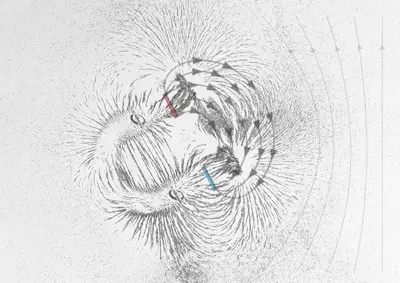
Magnetic field lines are imaginary lines that describe the direction and strength of a magnetic field. Magnetic field lines do not exist in reality, but they provide scientists and engineers with an intuitive way to visualise and analyse the properties of a magnetic field, similar to electric field lines or streamlines in fluid mechanics.
The density of magnetic field lines reflects the strength of the field: the denser the lines, the stronger the field. The direction of the magnetic field lines is determined by the source of the field, usually starting from the north pole of the magnet and pointing to the south pole, and forming a closed loop outside. This visualisation tool not only helps us understand the basic properties of magnetic fields, but also plays an important role in modern technology.
Who discovered magnetic field lines?
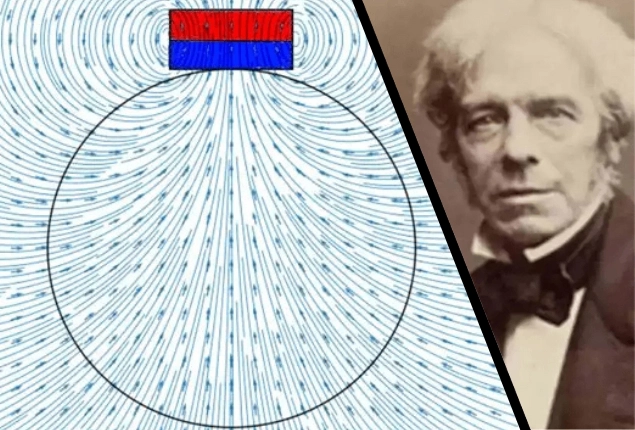
Faraday’s experimental method was very simple. He sprinkled iron filings on paper covered with magnets, and after gently tapping, the iron filings would align along the direction of the magnetic field to form a clear line pattern. This visualisation method made the complex magnetic field behaviour intuitive and easy to understand, laying the foundation for subsequent electromagnetic research.
Before Faraday, Danish physicist Hans Christian Oersted discovered in 1820 that electric current can deflect a nearby magnetic needle, revealing for the first time the intrinsic connection between electricity and magnetism. Oersted’s discovery provided an important experimental basis for Faraday’s research.
In addition, British mathematician James Clerk Maxwell integrated electromagnetic phenomena into the Maxwell equations based on Faraday, further improving the theoretical framework of magnetic field lines. His mathematical model unified the behaviour of magnetic field lines and electric field lines.
Characteristics of magnetic field lines
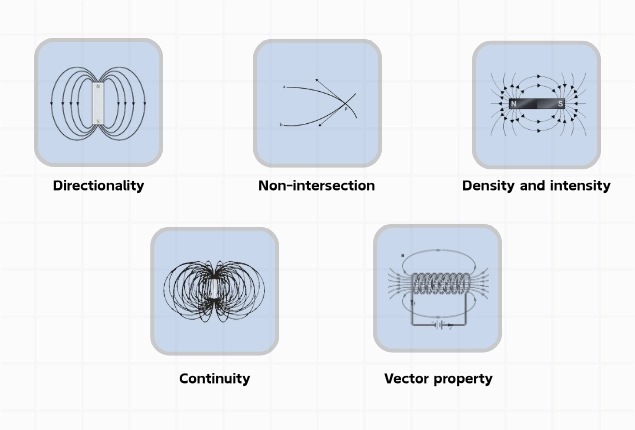
Directionality: Magnetic field lines start from the north pole of the magnet and point to the south pole, forming a closed loop outside the magnet. This directionality reflects the direction of the magnetic field in space, which can be visually verified by a compass or an iron filings experiment.
Non-intersection: Magnetic field lines never intersect. At any point in space, the magnetic field can only have one direction. If two magnetic field lines intersect, it will lead to a contradiction in the direction of the magnetic field, which is physically impossible.
Density and intensity: The density of magnetic field lines is proportional to the intensity of the magnetic field. In areas close to the north or south pole of the magnet, the magnetic field lines are dense, indicating a strong magnetic field. In places far away from the magnetic poles, the magnetic field lines are sparse and the magnetic field is weak.
Continuity: Magnetic field lines are continuous in space, forming a closed loop.
Vector property: Magnetic field lines not only indicate direction, but are also related to the intensity of the magnetic field. The strength of a magnetic field can be quantified by the magnetic flux, which is related to the strength of the field and the area it passes through.
Methods for visualising magnetic field lines
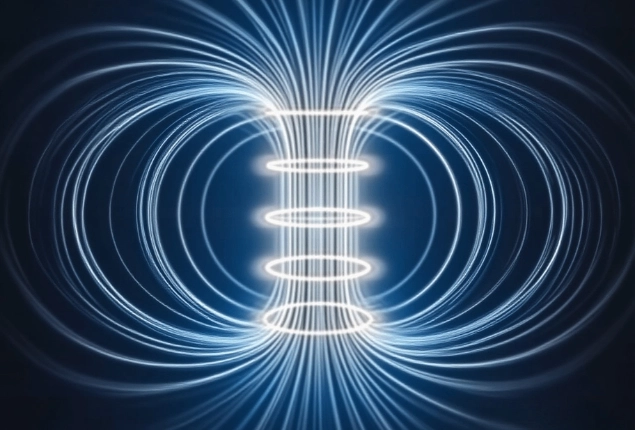
Iron filings experiment: This is the most classic demonstration method. Spread the iron filings evenly on a piece of paper covered with a magnet. The iron filings will be arranged along the direction of the magnetic field lines, forming a clear pattern.
Compass detection: By placing a small compass and observing its direction, the direction of the magnetic field lines can be depicted point by point. This method is suitable for accurately measuring the magnetic field distribution in a specific area.
Computer simulation: Modern technology uses electromagnetic field simulation software to generate three-dimensional magnetic field line images to help engineers design complex magnetic field systems, such as particle accelerators or nuclear magnetic resonance equipment.
Magnetic fluid display: In some displays, a magnetic fluid (ferrofluid) is placed in a magnetic field. The magnetic fluid forms a unique pattern along the magnetic field lines, presenting the dynamic beauty of the magnetic field.
Interaction of magnetic field lines with electric current
The interaction between magnetic field lines and electric current is one of the core contents of electromagnetism and is widely used in modern technology.
The effect of a magnetic field on electric current: When a wire carrying electric current is placed in an external magnetic field, it is affected by the Ampere force (Lorentz force). The direction of this force is determined by the left-hand rule: hold your left hand with your fingers pointing in the direction of the current, your palm facing the direction of the magnetic field, and the direction of the thumb points is the direction of the force. The Ampere force is the core principle of electric motors and electromagnetic relays, which produces rotational or linear motion by controlling the relative direction of the current and magnetic field lines.
Electromagnetic induction is another important phenomenon of the interaction between magnetic field lines and electric current. When the number of magnetic field lines passing through a coil changes, an induced current is generated in the coil.
Modern applications of magnetic field lines

Medicine: Magnetic resonance imaging (MRI) uses uniform magnetic fields and precise distribution of magnetic field lines, combined with radio frequency pulses, to produce high-definition images of the inside of the human body for diagnosis of disease.
Energy: Generators generate electricity through the relative movement of magnetic field lines and coils; transformers use magnetic field lines to transfer energy in the iron core to achieve voltage conversion. Wind power and hydropower both rely on the electromagnetic induction principle of magnetic field lines.
Transportation: Maglev trains use the thrust and levitation force generated by electromagnetic fields to achieve frictionless high-speed operation. The optimised design of magnetic field lines ensures the stability and efficiency of the train.
Electronic devices: Speakers convert electrical signals into mechanical vibrations and produce sound through the interaction of magnetic field lines with energised coils. Hard drives use the changes in the direction of magnetic field lines to store data.
Scientific research: Particle accelerators use strong magnetic fields to control the movement of charged particles and explore the basic composition of the universe. Precise control of magnetic field lines is crucial to the success of experiments.
Industrial applications: Electromagnetic cranes use strong magnetic fields to attract and move metal objects
Effect of shape on magnetic field lines
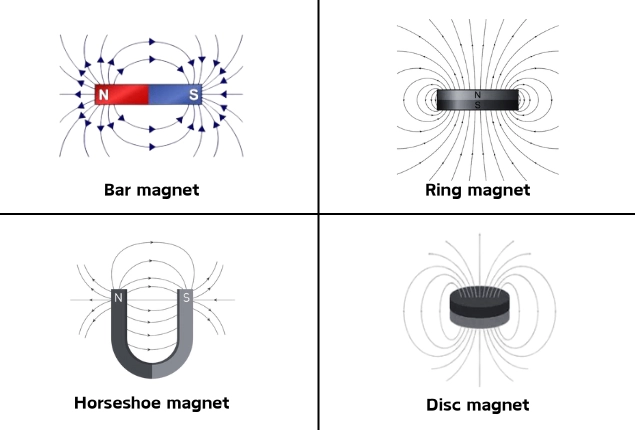
Ring magnet: The magnetic field lines are relatively uniform inside the ring and weak outside.
Horseshoe magnet: The north and south poles are close, and the magnetic field lines form a dense and uniform magnetic field between the two poles.
Disc magnet: The magnetic field lines are dense near the surface, which is suitable for magnetic fixtures, such as magnetic mobile phone holders.
Conclusion
As an important tool for describing the characteristics of magnetic fields, magnetic field lines run through the development of electromagnetism from Faraday’s iron filings experiment to modern high-tech applications. Oersted’s discovery of the connection between electricity and magnetism, Faraday’s theory of magnetic field lines, and Maxwell’s mathematical integration together built the cornerstone of modern electromagnetism. The directionality, non-intersection, and density characteristics of magnetic field lines make them the key to understanding and applying magnetic fields.

I'm dedicated to popular science writing about magnets. My articles mainly focus on their principles, applications, and industry anecdotes. Our goal is to provide readers with valuable information, helping everyone better understand the charm and significance of magnets. At the same time, we're eager to hear your opinions on magnet-related needs. Feel free to follow and engage with us as we explore the endless possibilities of magnets together!




